Activities in Volcanoes National Park (Other than Looking at Lava)
Volcanoes can be mercurial: erupting, not erupting, kinda sorta erupting–you never really know what you’re going to get. That’s why, if you’re planning a trip down to the National Park on the Big Island of Hawaii, it’s important to have some ideas of activities in Volcanoes other than just viewing lava. But don’t worry, there’s LOTS of options.
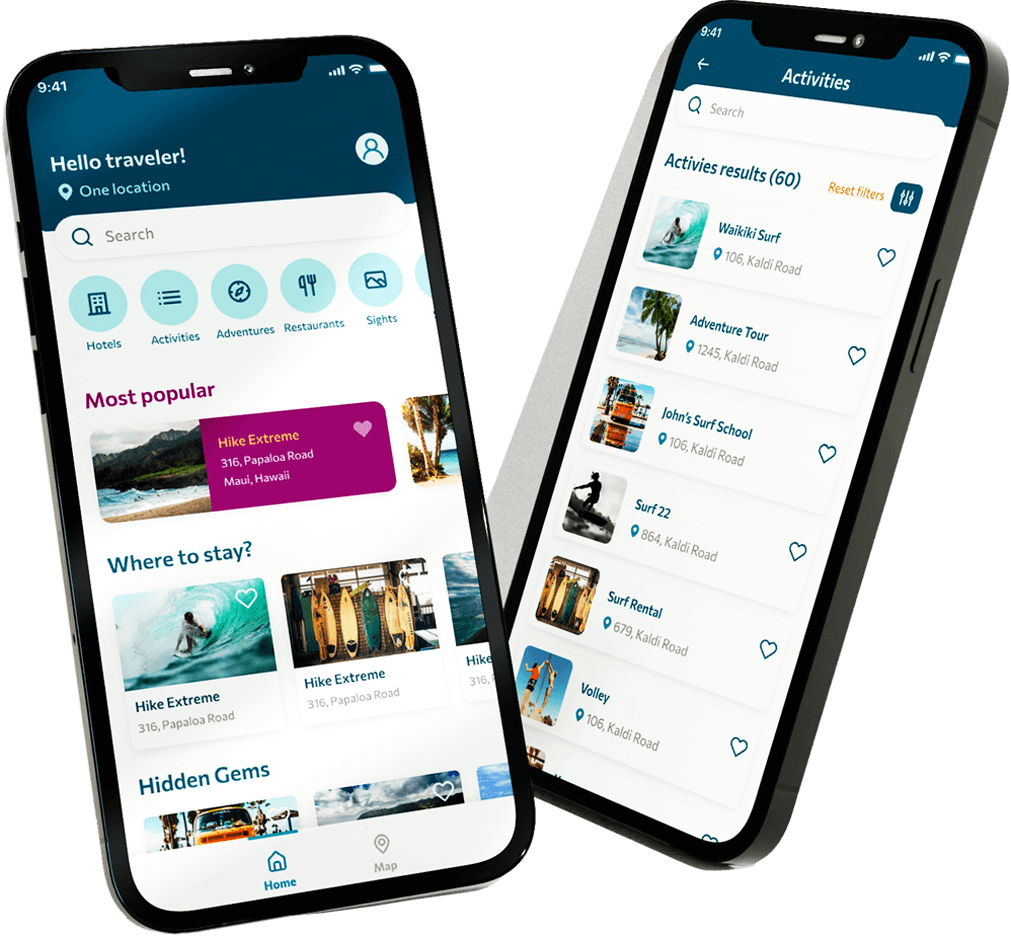
Visit Kilauea Iki Overlook in the National Park
The Kilauea Iki Overlook is definitely worth stopping for. This crater (meaning “little Kilauea”) had been asleep for almost a century when it became active in 1959. Then it erupted into gargantuan fountains of lava, some reaching a staggering 1,900 feet—that’s more than four times the height of the crater walls and is the highest on record. Scientists had warnings that an eruption was going to occur. Earthquake swarms and a swelling of Kilauea told them it was coming. So they set up their instruments and waited for the inevitable—at Halema‘uma‘u. They were stunned when the lava instead shot from the southwest wall of Kilauea Iki (across from you) 2 miles away from Halema‘uma‘u. Ground zero was near the Pu‘u Pua‘i (meaning gushing hill) cinder cone on the other side. It was created as fountains of lava, blown southwest by the trade winds, piled high into a cone. The vent spewed enough lava at one point to bury a football field 15 feet deep in lava—every minute! Each time the showers ended, the lava would drain back into the vent opening, only to be shot out again. When it ended, 36 days after it began, the crater floor was a dead zone with a lava bathtub ring above the floor to show how high the lava lake had reached. The lava lake cooled and cracked as sheets of lava buckled and warped, giving the crater the look of dried, crusted-over gravy. Today, steam usually issues from cracks in the crater floor, and the rock is still molten a couple of hundred feet down. There are still vents on the crater, though the main vent was covered by falling cinders. Kilauea Iki offers one of the best hikes on the island.
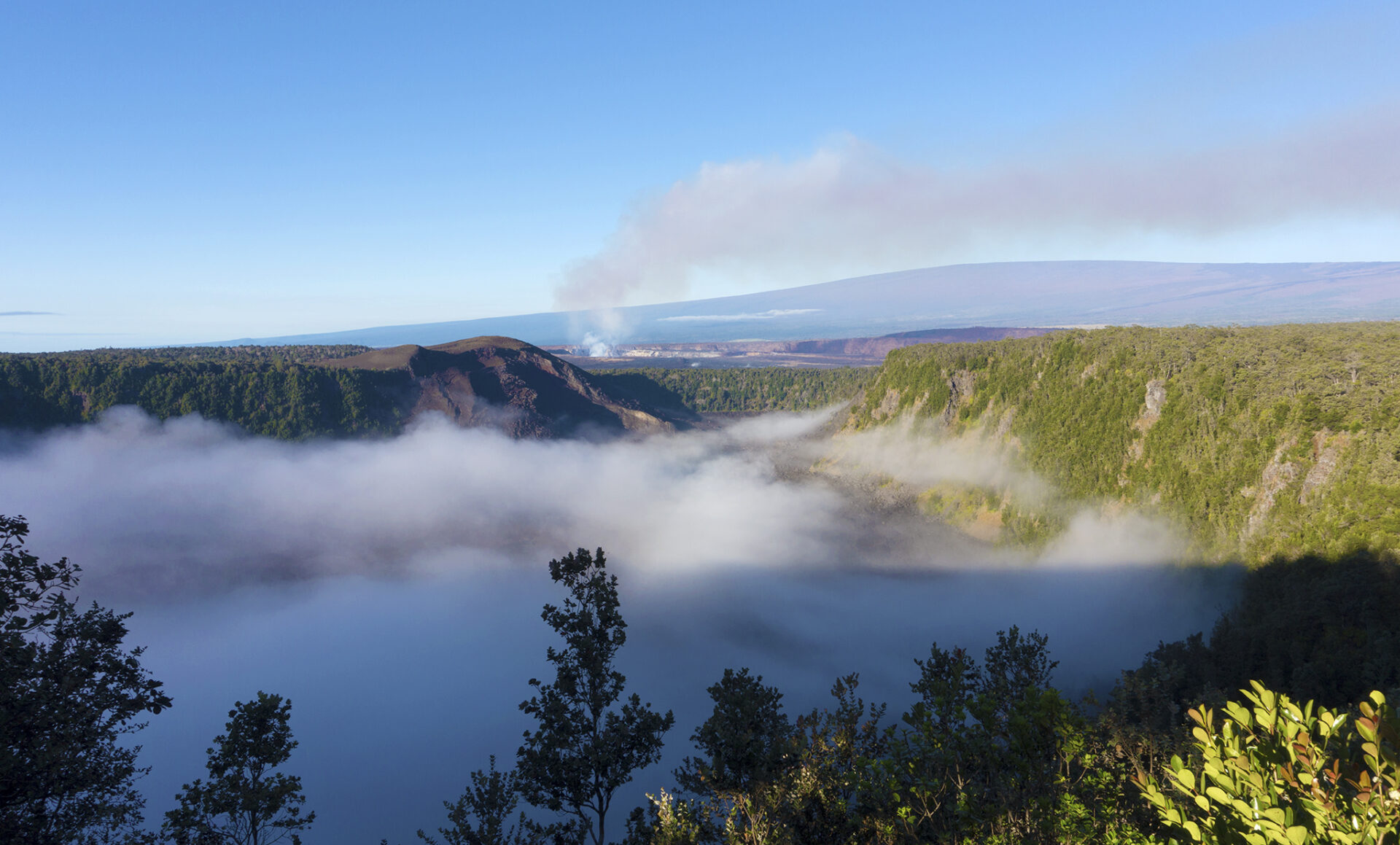
Kilauea Iki
Explore a Lava Cave
While looking for activities in Volcanoes, make sure to check out the many lava tubes and caves. Volcano Cave Adventures has an unusual cave from a Mauna Loa flow in Glenwood. The tube is unusual in that there’s lots of mud and some water flowing through it. The footing and lighting is a little awkard, but it’s fun and they’re friendly. $25 per person—two-person minimum. No preset tour times; try to call the owner after 5 p.m. to schedule something.
Eat Some Food
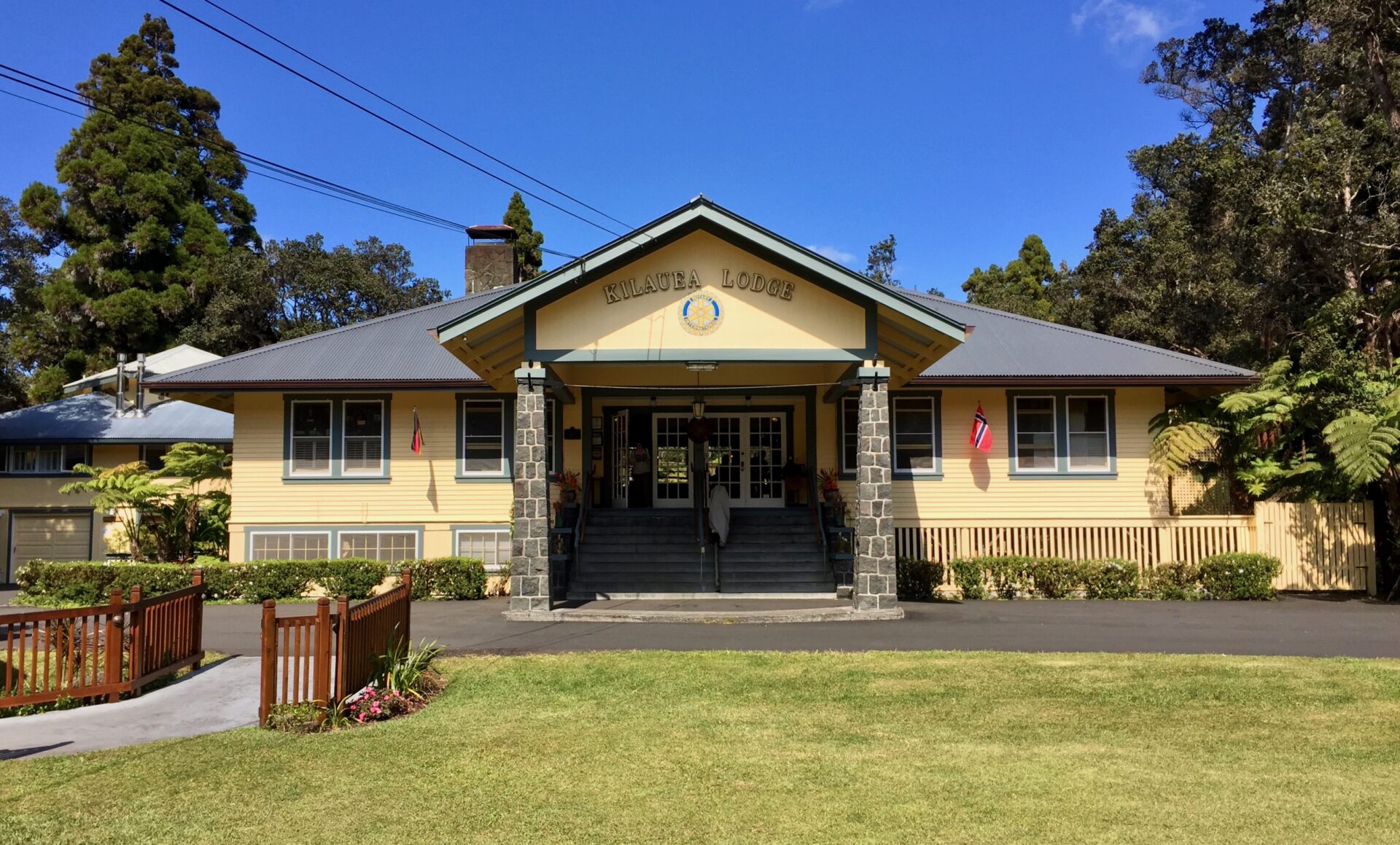
Kilauea Lodge
Kilauea Lodge & Restaurant serves refined cuisine in a warm atmosphere. Dinner items such as ribeye, lamb, and chicken are expertly prepared and presented. Though they have fresh fish, we like to go here for a good red meat experience. We’re seriously convinced they could make a mongoose appetizing. Expensive, but very good food in a comfortable environment. Lunch offers a pretty good variety with well-conceived sandwiches, salads and more. All the meals we’ve had are delicious, but you’ll get the most out of the dinner menu. One of the best activities in Volcanoes (or anywhere) is eating and this is one of the best restaurants on the island. If there is a wait, enjoy coffee by the “International Fireplace.”
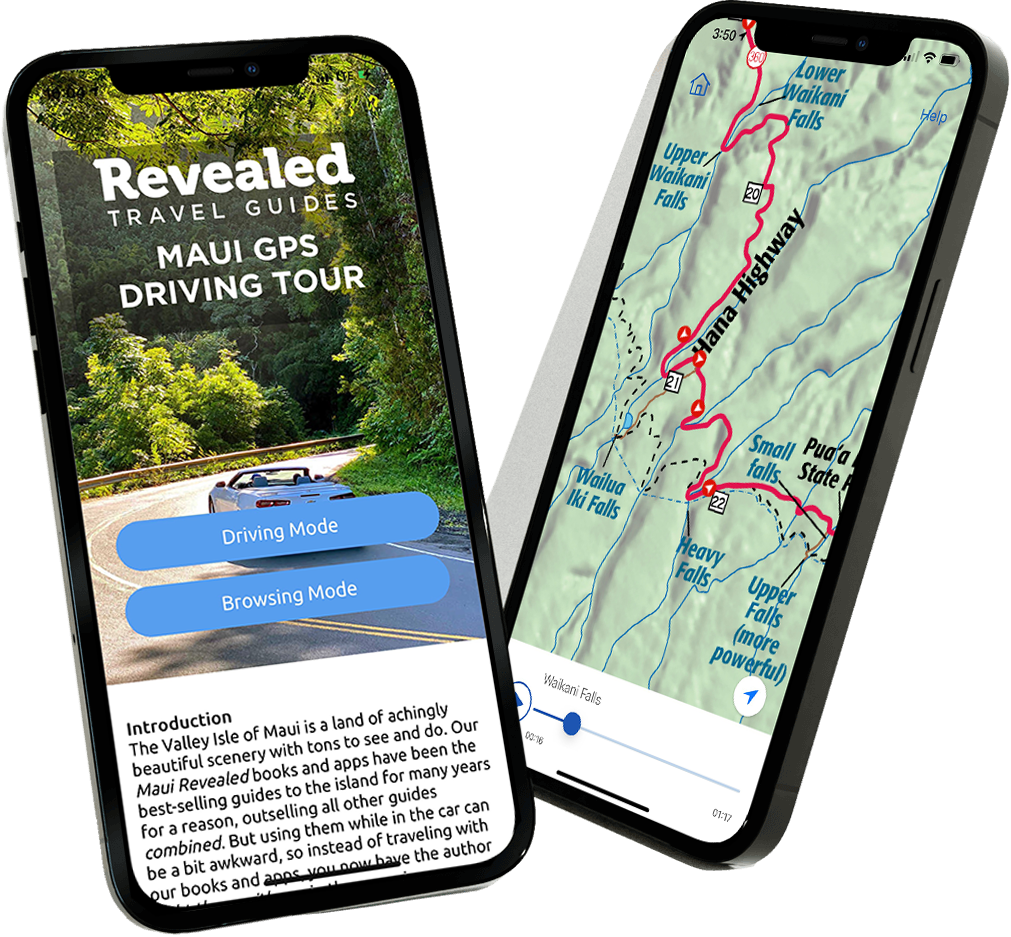
Experience Mauna Ulu Crater
This short hike is not for the easily frightened or the faint at heart. Mauna Ulu erupted between 1969 and 1974, at times shooting fountains of lava more than 1,770 feet into the air—that’s as high as the One World Trade Center building in New York. When it was all over, the event left a smoldering maw 400 feet deep and 500 feet across. (That’s a guess—it gets bigger all the time.) This sheer drop is accessible via a 45-minute hike from Chain of Craters Road in Hawai‘i Volcanoes National Park. From there, you just walk up to Mauna Ulu Crater.
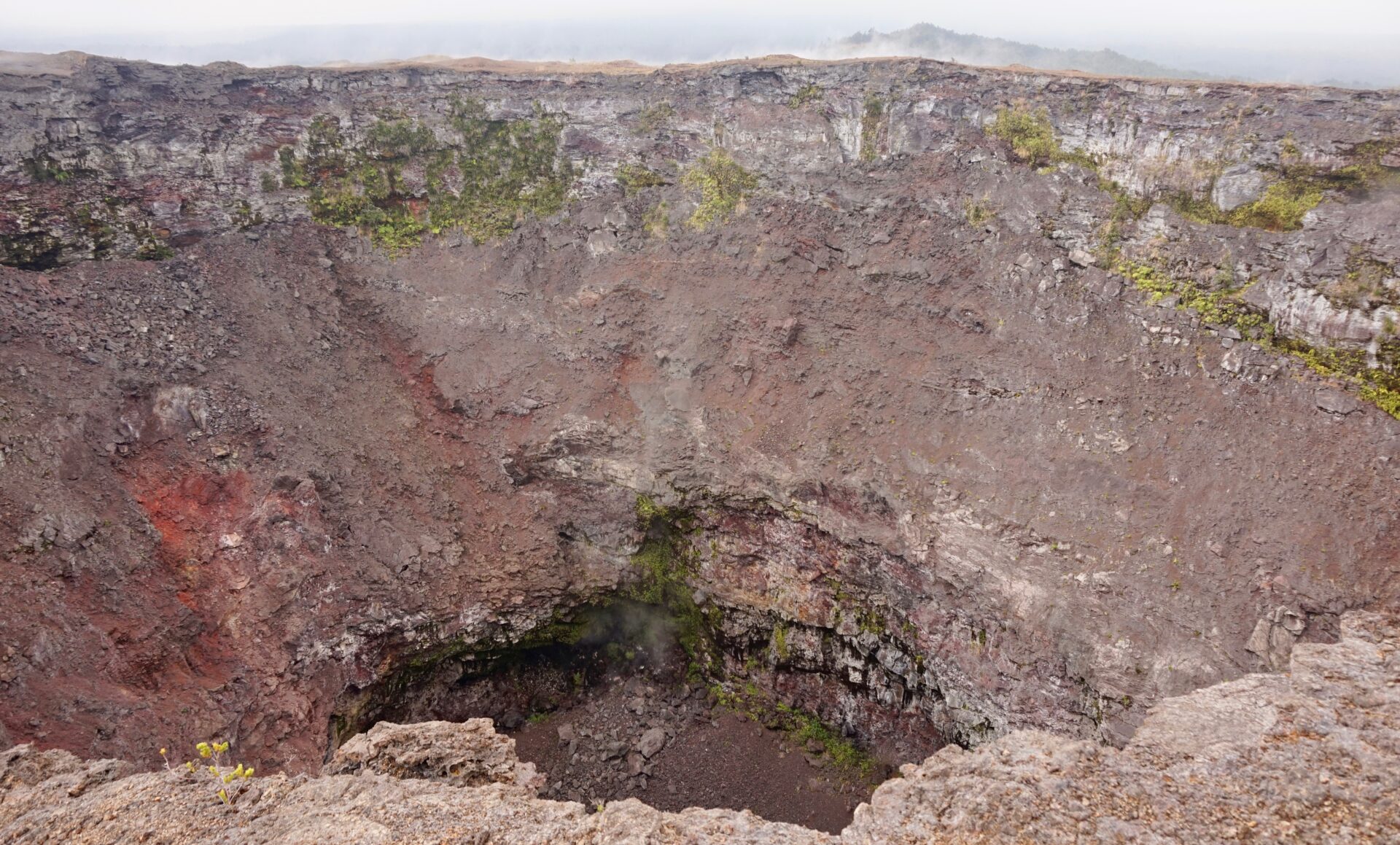 We can’t fly drones in the park, so you’ll have to visit in person to really experience this crater.
We can’t fly drones in the park, so you’ll have to visit in person to really experience this crater.
We need to stress that this is new land. The part of the hill adjacent to Pu‘u Huluhulu seems to be the most stable, but that is a relative term. There are several areas where thin, shelly lava breaks beneath your feet. You may only drop an inch or two, but your adrenaline tells you otherwise. The rim of the crater is nearly straight down and crumbling all the time. If you get too close, it may break off, you may fall in, and then you’re really out of luck. If all this doesn’t dissuade you, you’ll get to see a view that is beyond belief. The crater is raw, like an open wound on Kilauea. It usually steams from several spots. There are empty lava river banks around it where huge quantities of lava coursed their way down the mountain. There are blobs where lava spattered where it fell, large cracks with heat still escaping. This is as close as you may ever get to experiencing an erupting vent—while it’s not erupting. But remember, this hike is what we call an ‘okole squeezer, so be smart about the edge. A selfie stick may help extend your reach if you want to take a picture peeking over the edge to look at the bottom. Permits are only required if you plan to overnight at the Napau backcountry campsite, so you are allowed to do a day hike to Mauna Ulu without a permit or permission. That’s official from the park, but some park personnel sometimes erroneously tell visitors otherwise. Morning is usually best for this hike.
Spend the Night in the National Park
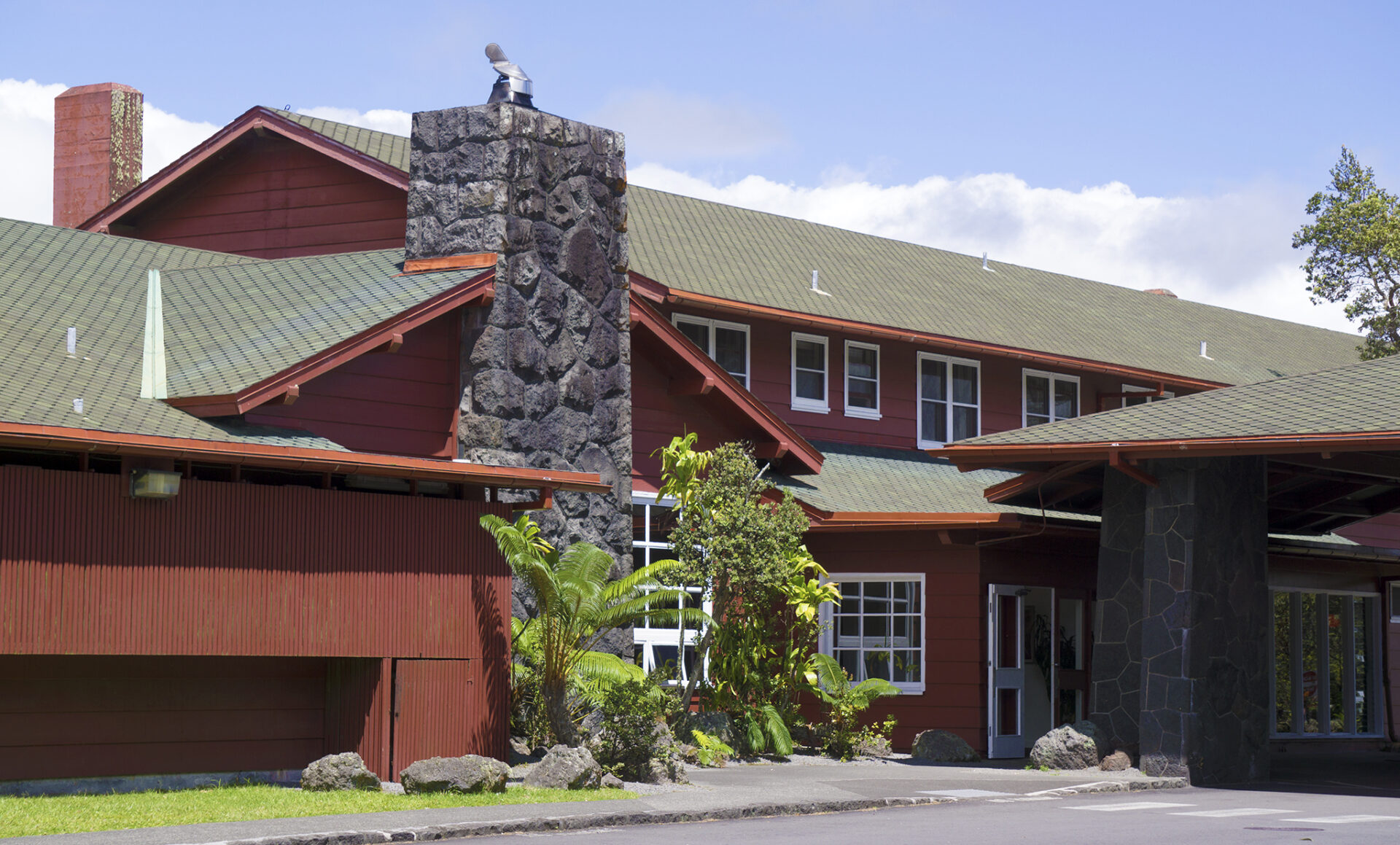
Volcano House
Our favorite of the activities in Volcanoes? Sleeping. Volcano House is located on the rim of Kilauea Caldera inside Hawai‘i Volcanoes National Park. Reopened in 2013 after a three-year closure. Before that it was the longest “continually running” hotel in the state. Volcano House opened across the street in 1846 (which predates the national park) as just a 12- by 18-foot hut without anyone hosting it. Over the years more buildings were added, eventually totaling 100 rooms. Sadly, the hotel burned to the ground in 1940 (except the 1877 building, which now houses the Volcano Art Center) and was rebuilt only a year later on its current land. (We need to find out the name of that contractor.) The new building was supposed to be temporary, but the park decided it was good enough, and so it stands today. The hotel is a protected park concessionaire and, like the park itself, is well-run. The renovations restored it to its 1940s style (but with updated amenities, of course). At night most people either relax at the bar or just curl up by the fire in the lobby fireplace (which always smells amazing). Some of the rooms (especially 11, 29 and 33) have excellent crater views. Some rooms have an electric fireplace.



0 Comments